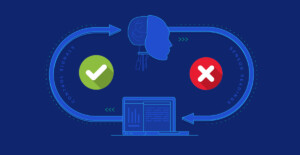In the always-evolving world of technology, understanding the language is the key to understanding the world of cybersecurity. Whether you’re a business owner seeking to secure your digital presence or an individual looking to navigate the tech support world, knowing the tech terms is the first step toward informed decision-making.
While it may seem overwhelming at first, our list of tech terms will make sure that you are supported in your journey through the tech universe.
Bandwidth
Bandwidth refers to the network connection’s capacity to transmit data. Monitoring bandwidth is crucial to detecting unusual data flows, which might indicate a security breach.
Broadband Connection
A high-speed internet connection is essential for secure and efficient data transmission, particularly for remote work and secure communication.
Browser
The software application used to access and navigate the internet. Using the right web browser can help enhance your security efforts.
BYOD
Bring Your Own Device refers to the practice of allowing employees to use their personal devices (like smartphones or laptops) for work. Proper cybersecurity measures, like mobile device management, are critical in BYOD environments to protect company data.
Cloud
The cloud is made of remote servers and services that can be accessed over the internet. Cloud computing offers numerous cybersecurity benefits, such as data redundancy, automatic updates, and enhanced security measures.
CTO
The Chief Technology Officer is responsible for a company’s technology strategy, including cybersecurity. They oversee the implementation of security measures to protect the organization’s digital assets. If your company doesn’t have a dedicated CTO, our team of experts can help you make the right tech decisions.
Cookie
Cookies are small pieces of data stored on a device (normally by a website.) While cookies have legitimate uses, they can also be exploited by cybercriminals, making cookie management important for cybersecurity.
Disaster Recovery
Disaster recovery is a plan for restoring data and IT infrastructure after a catastrophic event. A well-designed disaster recovery plan is crucial to ensure business continuity in the face of cyberattacks or natural disasters.
DNS
The domain name system reads domain names and translates them into IP addresses, which browsers use to find and display websites. Cybersecurity measures often include DNS filtering and monitoring to block malicious websites and protect users.
Domain
This tech term refers to your unique address on the internet. Proper domain management includes domain monitoring and security measures to prevent unauthorized access or domain hijacking.
Encryption
This process converts data into code to prevent unauthorized access and maintain secure connections. Finding communication platforms that support end-to-end encryption is essential in protecting sensitive information.
Firewall
This network security device monitors and filters network traffic. It acts as a barrier between a trusted network and untrusted networks, providing a critical layer of cybersecurity defense.
Hardware
Hardware refers to physical computer equipment. Proper hardware security, such as securing servers and devices, is essential for maintaining a safe and secure work environment.
Help Desk
Help desks provide technical support to users. Whether you have an onsite or remote help desk, this plays a role in responding to security incidents and assisting with security-related inquiries.
IT Assessment
An IT assessment evaluates an organization’s technology infrastructure, including cybersecurity measures. It helps identify vulnerabilities and areas for improvement.
Malware
This software is designed to cause digital harm in some way. Different types of malware can include adware, spyware, and ransomware.
MSP
A Managed Service Provider is a third party that provides comprehensive IT support to your business. Managed IT services can provide proactive support, enhanced security measures, and predictable costs with the support of an experienced team.
Network Monitoring
Network monitoring involves continuously observing a network’s performance and security. This proactive method helps detect and respond to security threats in a prompt manner.
Phishing
This common email scam mimics communication from a trustworthy source in an attempt to steal personal information.
Remote Backup
Remote backup involves storing data in offsite locations. It’s a key element of disaster recovery and cybersecurity to ensure data can be restored in case of damage to the on-site infrastructure.
When looking for tech support, keep an eye out for the above terms. Our team of expert IT consultants can help make sure your business is on track for success. Contact tech42 today to get started!







